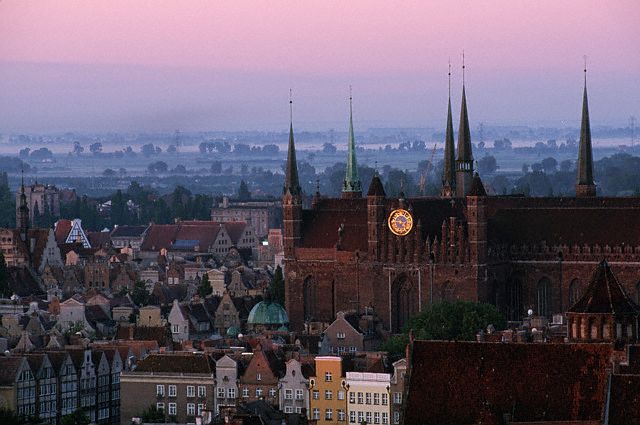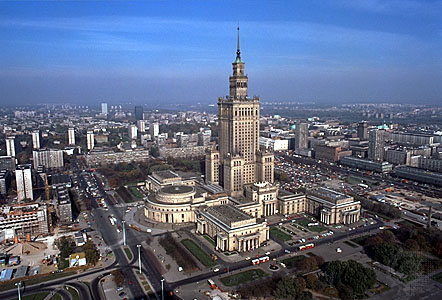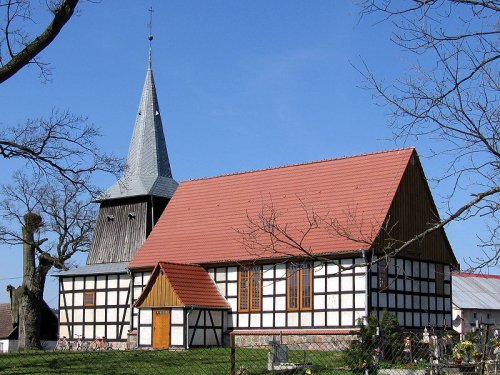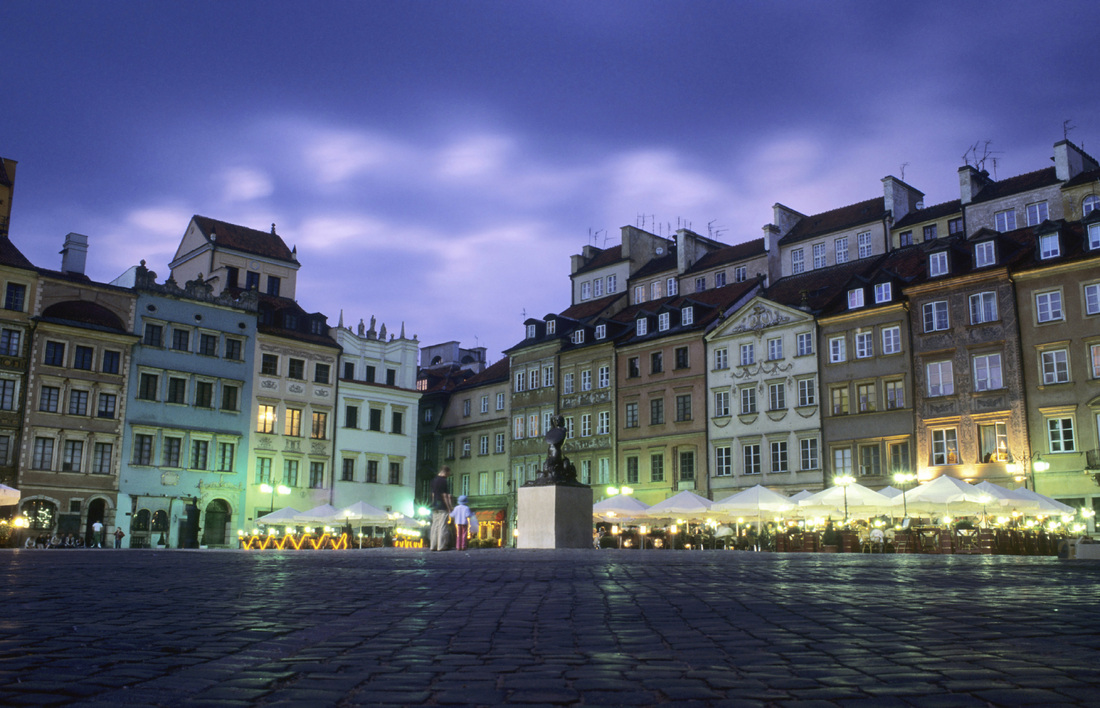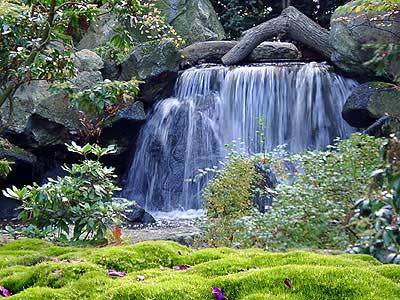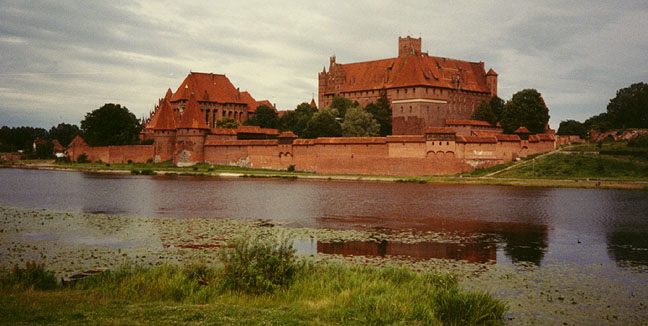PeopleThe Polish people are called Poles. They were one of the most influential tribes of greater Poland and were instrumental in managing to unite many other western Slavic tribes in the area. The Poles belong to the Lechitic subgroup of these ethnic people. They are a western Slavic ethnic group of central Europe. Their religion is predominantly Roman Catholic and Polish is their native language.
The name of the nation comes from a western Slavic ethnic group of Polans primarily associated with people living and sharing the same traditions and ethnic background, originating from Poland. The Polish word for a Polish person is Polak (male) and Polka (female), |
Poland is the ninth largest country in Europe. It is bordered to the west by Germany, to the south by Slovakia and Czech Republic, and to the east by Russia, Lithuania, Belarus and Ukraine. The mountains of Sudeten and Tatra provide a dramatic contrast to the agricultural plain land and gently rolling countryside comprising much of northern and central Poland. The majority of the 38.6 million people in Poland are Polish and Catholic. Significant groups of Ukrainians, Bojks, Lemks, and Belarusians exist in the eastern part of the country. Poland used to be well-known for its shipbuilding, but the country's major source of income lately is from the cosmetics, medicines, and textile products industries, often under license from western multinational companies. Tourists coming in from other countries head to old cities like Krakow for a cultural experience, or to the ski resorts such as those found in Tatras, or to the popular Baltic beaches and inland lake resorts. |
Geography
Located east of Germany in the central portion of Europe, Poland is bounded by the Baltic Sea in the north and the Carpathian mountains in the south. From east to west, its terrain varies within the plain and extends about 428 miles, expanding 544 miles from north to south.
Including inland waters, the country's total area is 120,726 square miles. A vast region of plains extends to the Sudetes on the Czech and Slovak borders to the southwest and to the Carpathians on the Czech, Slovak, and Ukrainian borders to the southeast. In northeastern Poland is a dense forest with limited population.
The major cities of Warsaw, Krakow, Poznan, Wroclaw, Szczecin, and Gdansk are well-connected by the Polish Railways, so traveling from place to place is easy.
Including inland waters, the country's total area is 120,726 square miles. A vast region of plains extends to the Sudetes on the Czech and Slovak borders to the southwest and to the Carpathians on the Czech, Slovak, and Ukrainian borders to the southeast. In northeastern Poland is a dense forest with limited population.
The major cities of Warsaw, Krakow, Poznan, Wroclaw, Szczecin, and Gdansk are well-connected by the Polish Railways, so traveling from place to place is easy.
HistoryPoland's history spans well over a millennium. The nation was led by rulers who converted the Poles to Christianity. By the 1300s, the country became dominant, creating a strong partnership with the Grand Duchy of Lithuania during the Jagiellon dynasty and solidifying it into one of the most powerful states in the next three centuries.
The Nihil Novi Act in 1505 marked the "Golden Liberty" rule in Poland. By the 18th century, the country reverted back into anarchy having been invaded by Russia and Austria. Several uprisings occurred during the 19th century leading to its independence in 1918, which was destroyed by Nazi Germany during the World War II. Not long after the retreat of the German forces, the People's Republic of Poland was created. During this time, the country's geographic location shifted to the west and Poland existed as a satellite state of the Soviet Union. By the late 1980s, the government shifted from a communist state to capitalist democracy creating the modern day Polish state. |
Famous Attraction
Tourists frequently visit Poland, especially since its unification with the European Union in 1990. The country attracts millions of tourists annually from around the world. Poland had 15.7 million visitors in 2006.
Tourist attractions in Poland are historic sites, famous buildings and the natural environment. Its natural environment is relatively unaffected by encroaching civilization. Visitors come back to the country for its mountains, sea coasts, and lake reserves. Among these are the Tatra Mountains, Karkonosze, Puszcza Bialowieska, Dunajec River Gorge, Bieszczady, Pojezierze Mazurskie, Kampinos and many others.
Some historical sites and famous buildings in Poland are: Wawel and Cracow's Old City, Churches of Peace in Jawor and Swidnica, The Wieliczka Salt Mine, Jasna Gora in Czestochowa, Sanctuary in Kalwaria Zebrzydowska, Wilanow Palace and Warsaw Old Town, Gniezno Cathedral, Zamek Ksiaz, Wooden Churches of Southern Little Poland, Torun Old Town, Gdansk Old Town, Poznan Old Town, Wroclaw Old Town, Zamosc, Cieszyn, Lublin, Malbork Castle, and the Polish villages.
Tourist attractions in Poland are historic sites, famous buildings and the natural environment. Its natural environment is relatively unaffected by encroaching civilization. Visitors come back to the country for its mountains, sea coasts, and lake reserves. Among these are the Tatra Mountains, Karkonosze, Puszcza Bialowieska, Dunajec River Gorge, Bieszczady, Pojezierze Mazurskie, Kampinos and many others.
Some historical sites and famous buildings in Poland are: Wawel and Cracow's Old City, Churches of Peace in Jawor and Swidnica, The Wieliczka Salt Mine, Jasna Gora in Czestochowa, Sanctuary in Kalwaria Zebrzydowska, Wilanow Palace and Warsaw Old Town, Gniezno Cathedral, Zamek Ksiaz, Wooden Churches of Southern Little Poland, Torun Old Town, Gdansk Old Town, Poznan Old Town, Wroclaw Old Town, Zamosc, Cieszyn, Lublin, Malbork Castle, and the Polish villages.
NightlifePoland is full of interesting places with so many things to do, see and experience, you may not have enough time to do everything. You can definitely find exciting parties and dancing until 3:00 a.m. in most clubs in Warsaw and Krakow. Both cities have lots of bars playing jazz music. Make sure you visit Studio in Zielona Gora, considered one of the best clubs in the country. The Cotton Club is also highly recommended, offering inexpensive drinks and jazz music to the highly discriminating enthusiasts. The Tygmont is another of the top 100 jazz bars with talents that are world-class; making it worth to drop in while you are in Poland.
In the old Jewish quarter, called Kazimierz, you can have dinner while musicians play klezmer, a Yiddish style of music. While in Warsaw, visit Foksal Street and check out the brewery and restaurants lining the street until late night. |
Culture
Polish culture is influenced by east and west and is evident in its architecture, folklore, and art. Its culture and art always reflect themselves in world trends. Polish literature dates back to the 12th century and showcases many famous poets and writers such as the Nobel laureates Henryk Sienkiewicz, Wladyslaw Reymont, Czeslaw Milosz, Wislawa Szymborska.
Poland is the birthplace of world famous people like Pope John Paul II, Copernicus, and Chopin. Joseph Conrad, a well-known English writer was born half-Polish. Well-known movie directors such as Roman Polanski, Janusz Kaminsky, and Agnieszka Holland are also born Polish. In music, Poland is the birthplace of one of history's music geniuses, Frederic Chopin.
Poland is the birthplace of world famous people like Pope John Paul II, Copernicus, and Chopin. Joseph Conrad, a well-known English writer was born half-Polish. Well-known movie directors such as Roman Polanski, Janusz Kaminsky, and Agnieszka Holland are also born Polish. In music, Poland is the birthplace of one of history's music geniuses, Frederic Chopin.
CuisinePolish cuisine is an exciting mixture of influences from Italy, France, Armenia, Lithuania, Hungary, and from the Jews as well. It also borrowed some inspirations from the more exotic Tartar and Cossack cooking. It is related to the Slavic cooking in its use of kasza and other cereals. All these influences make Polish cuisine rich and filling. Dishes cooked the Polish way are rich in pork, chicken, winter vegetables such as cabbage, spices, and a variety of noodles, the most notable of which is the pierogi.
Poles pride themselves in seriously devoting generous amount of time in preparing and enjoying their meals, with special mention to Christmas Eve dinner and Easter breakfast, both of which take a number of days to prepare. Popular Polish foods include borscht, kielbasa, flaczki, pierogi, pork chops, various potato dishes, and many more. Traditional desserts cooked the Polish way include gingerbreads and paczki. |
Qunar

